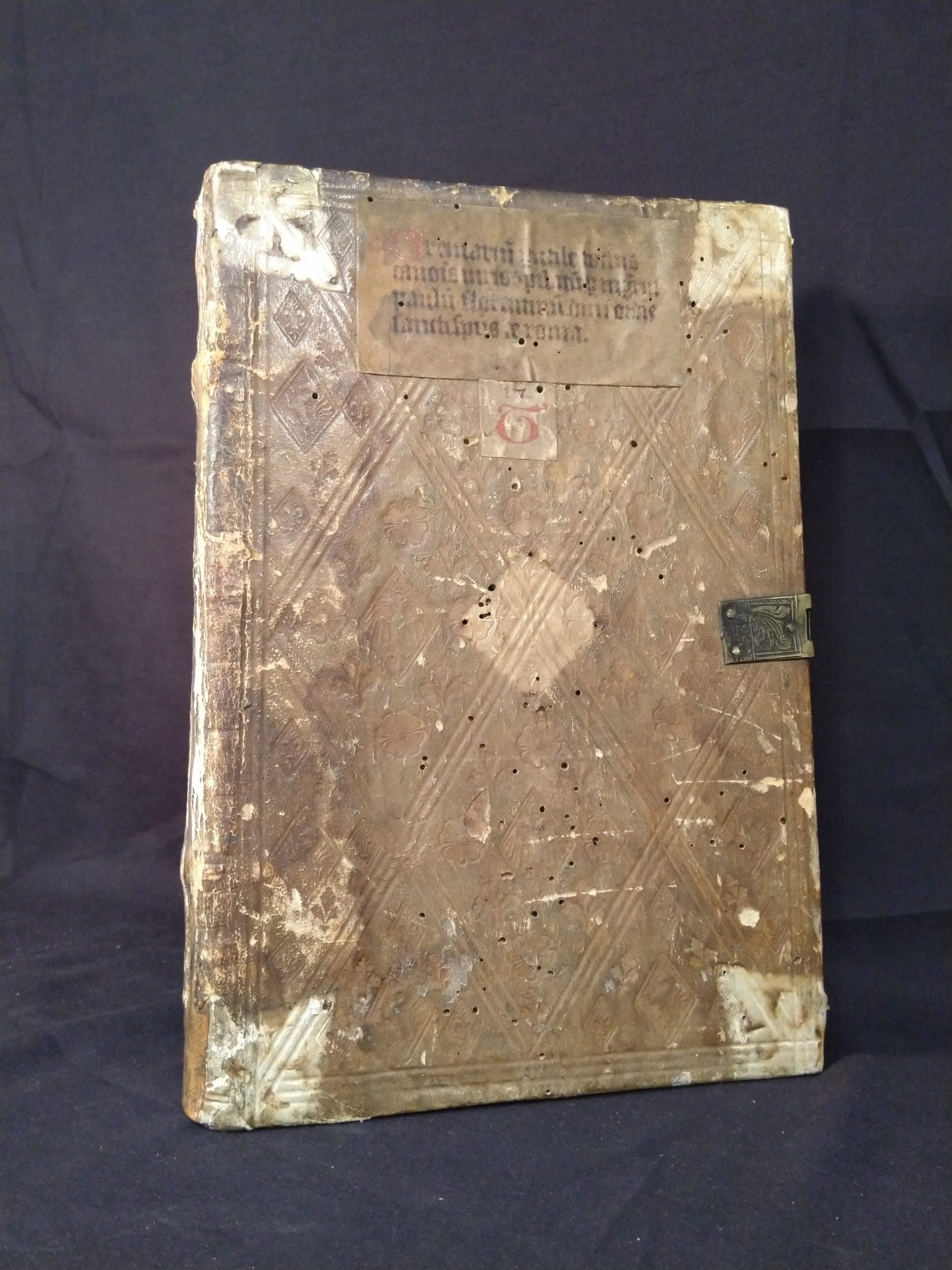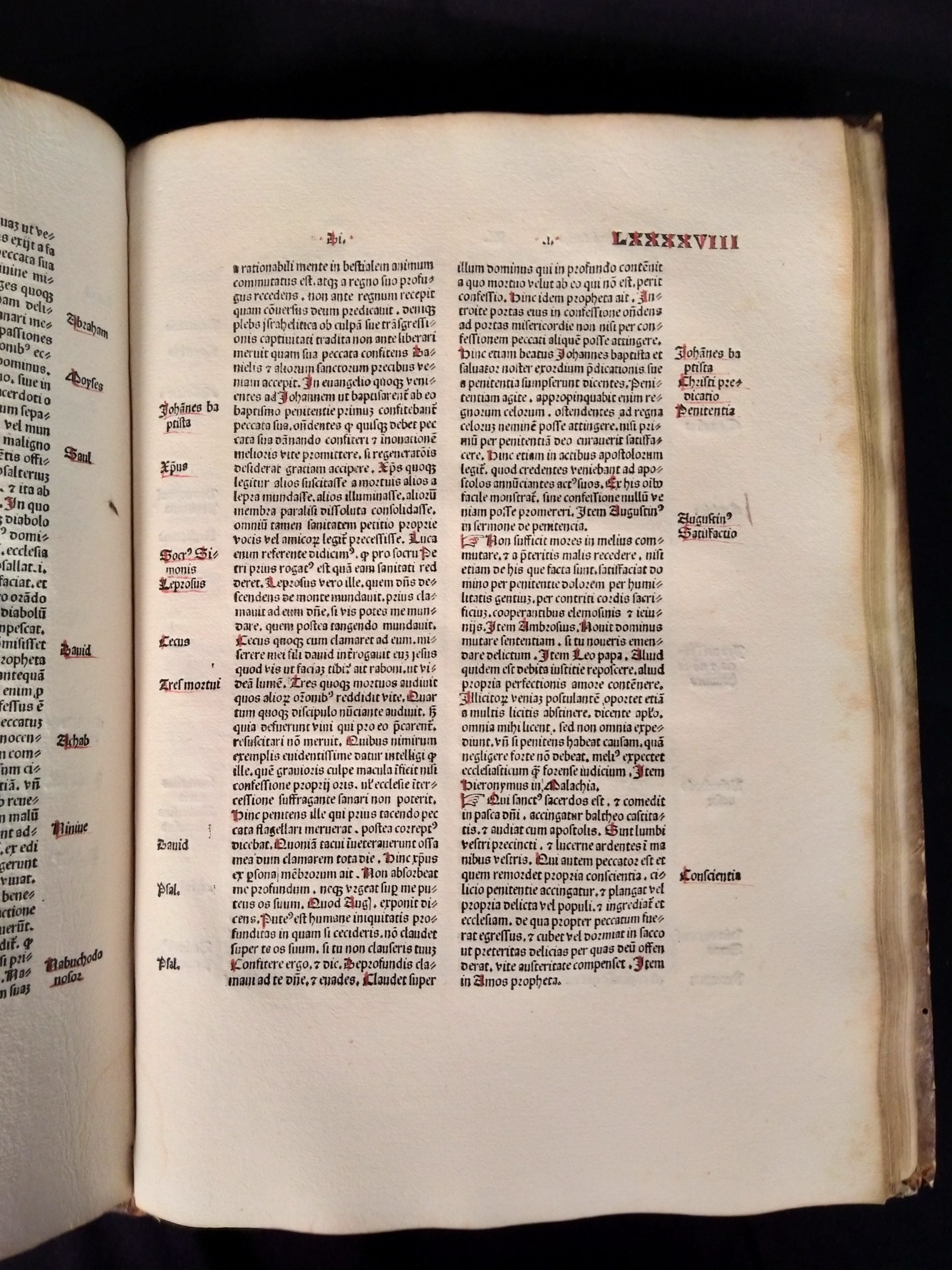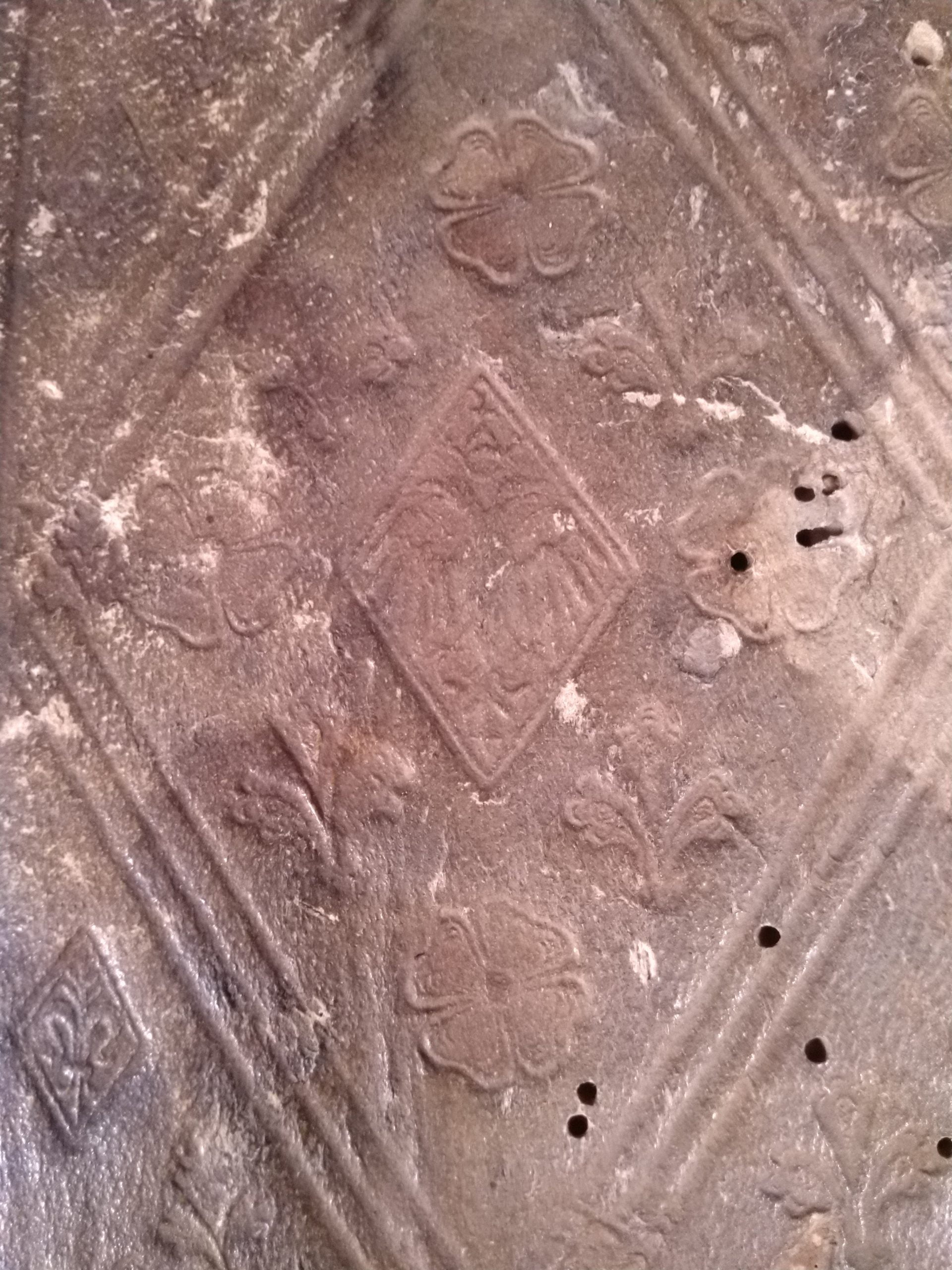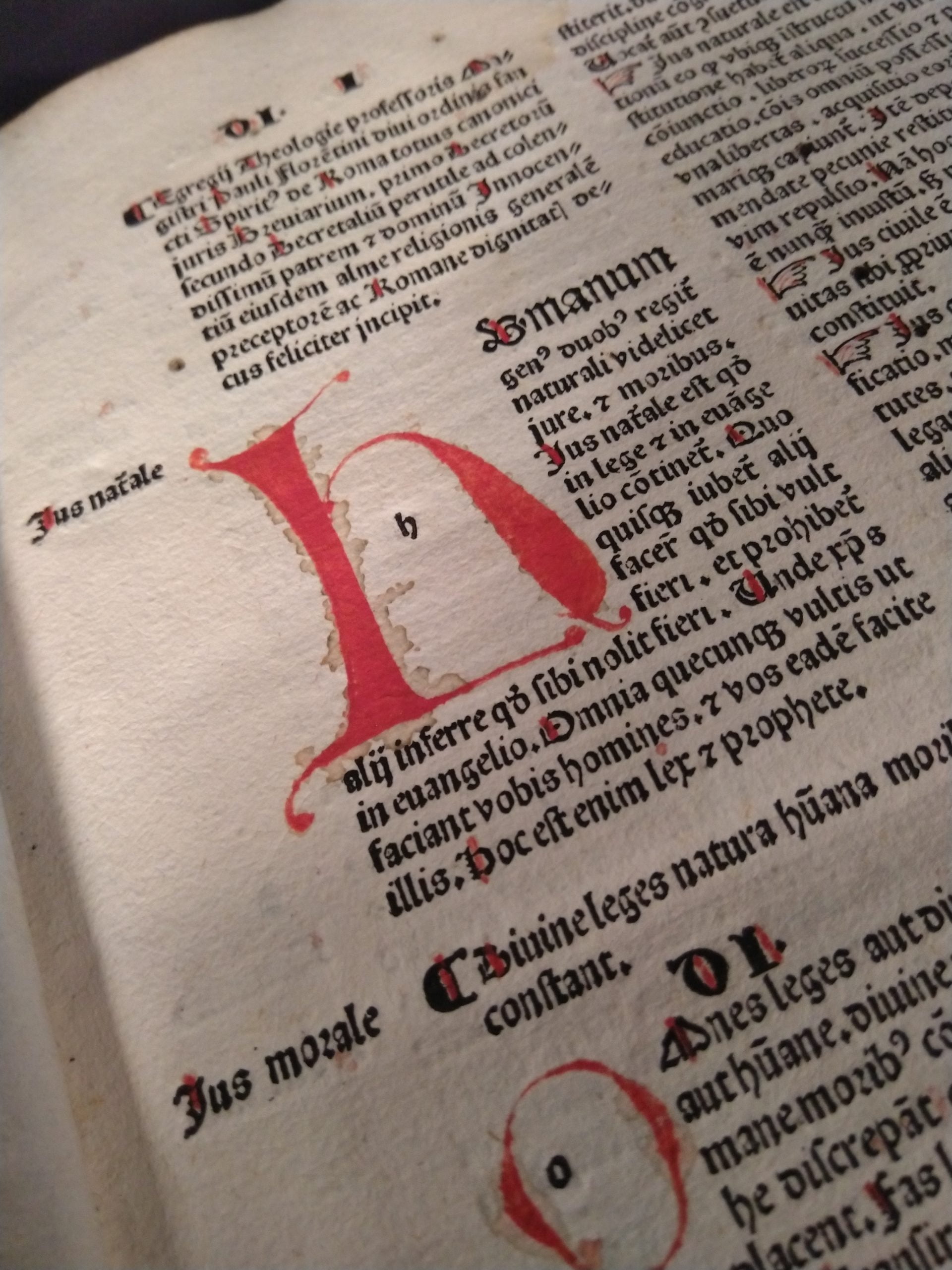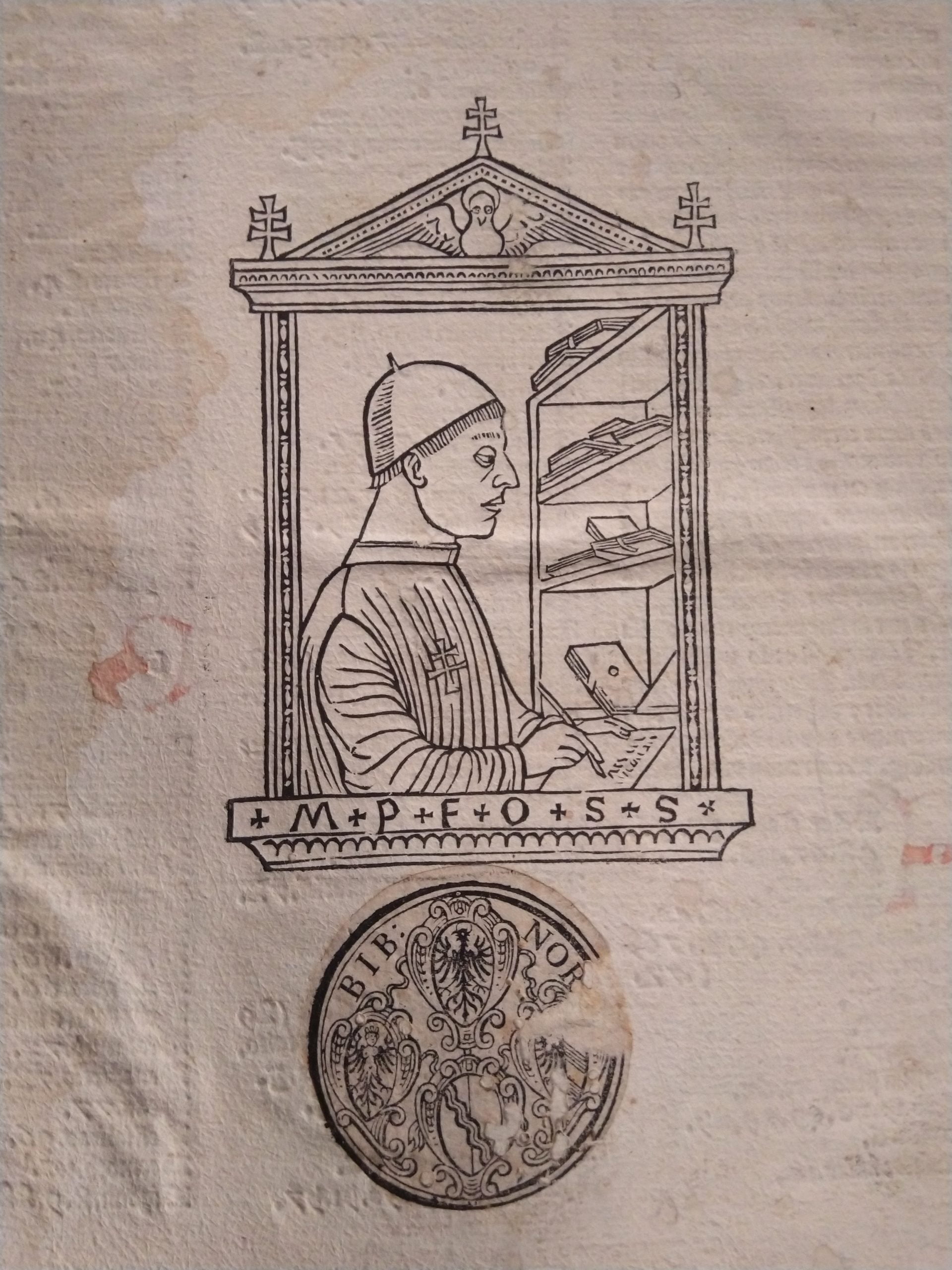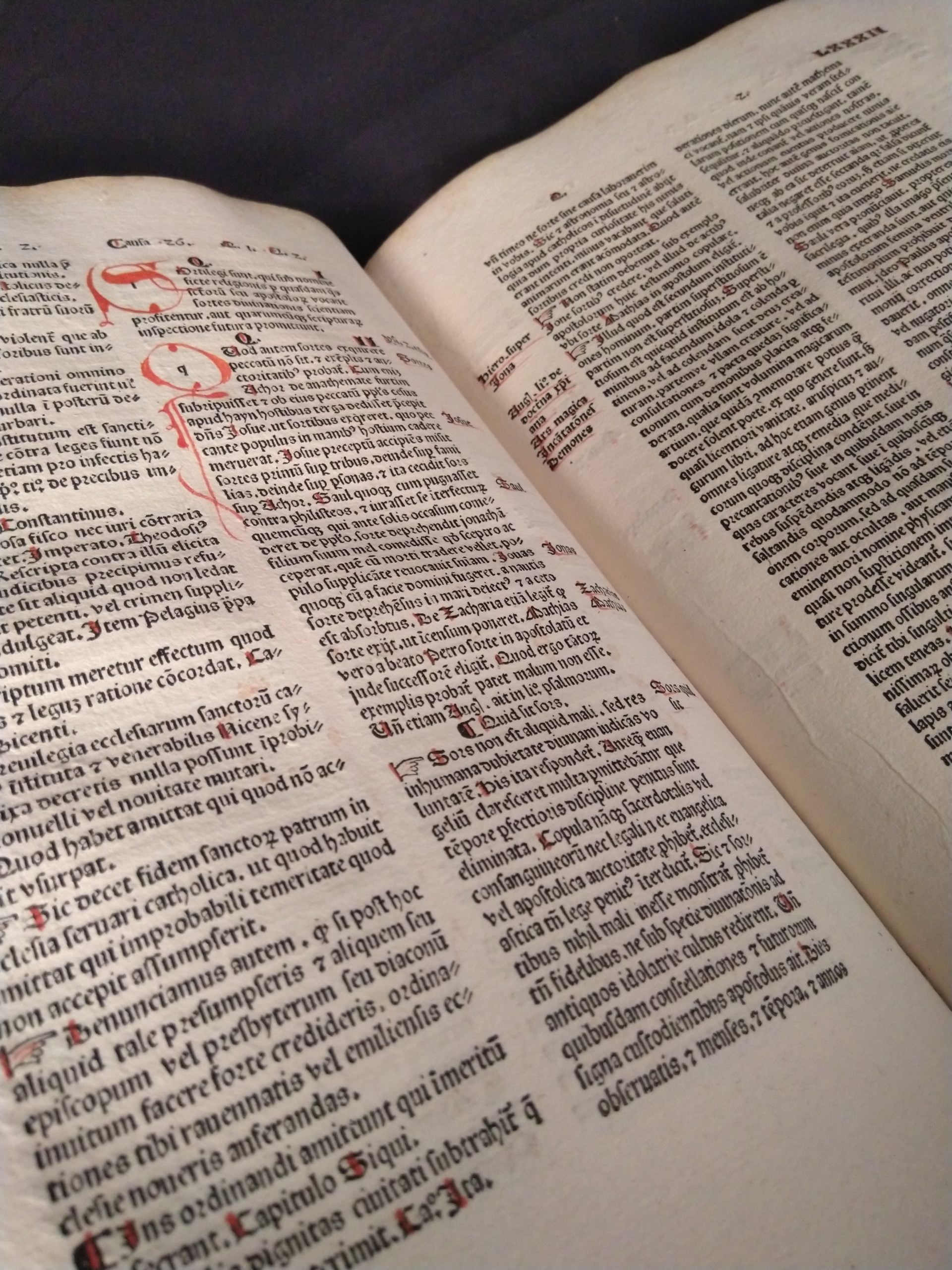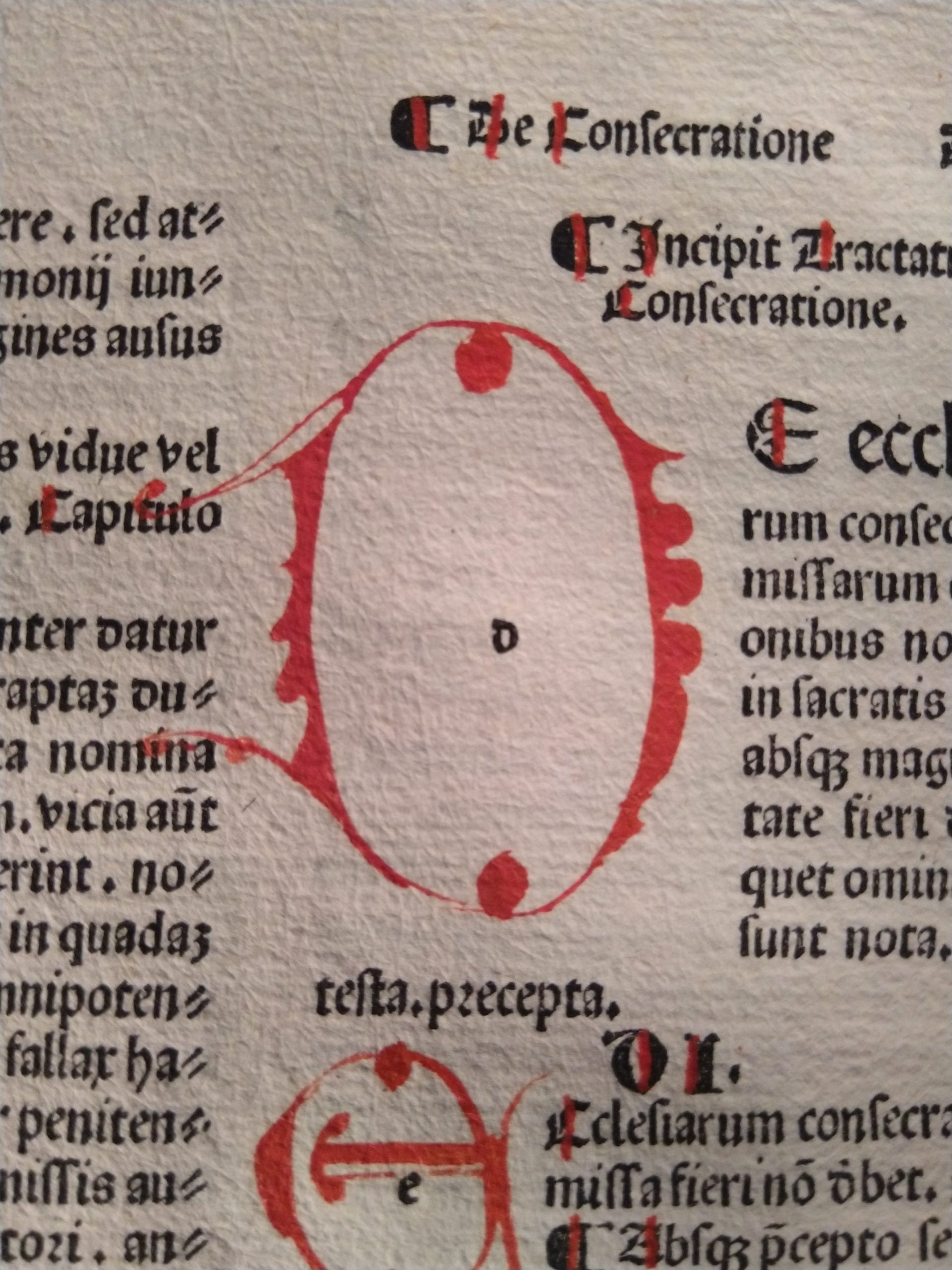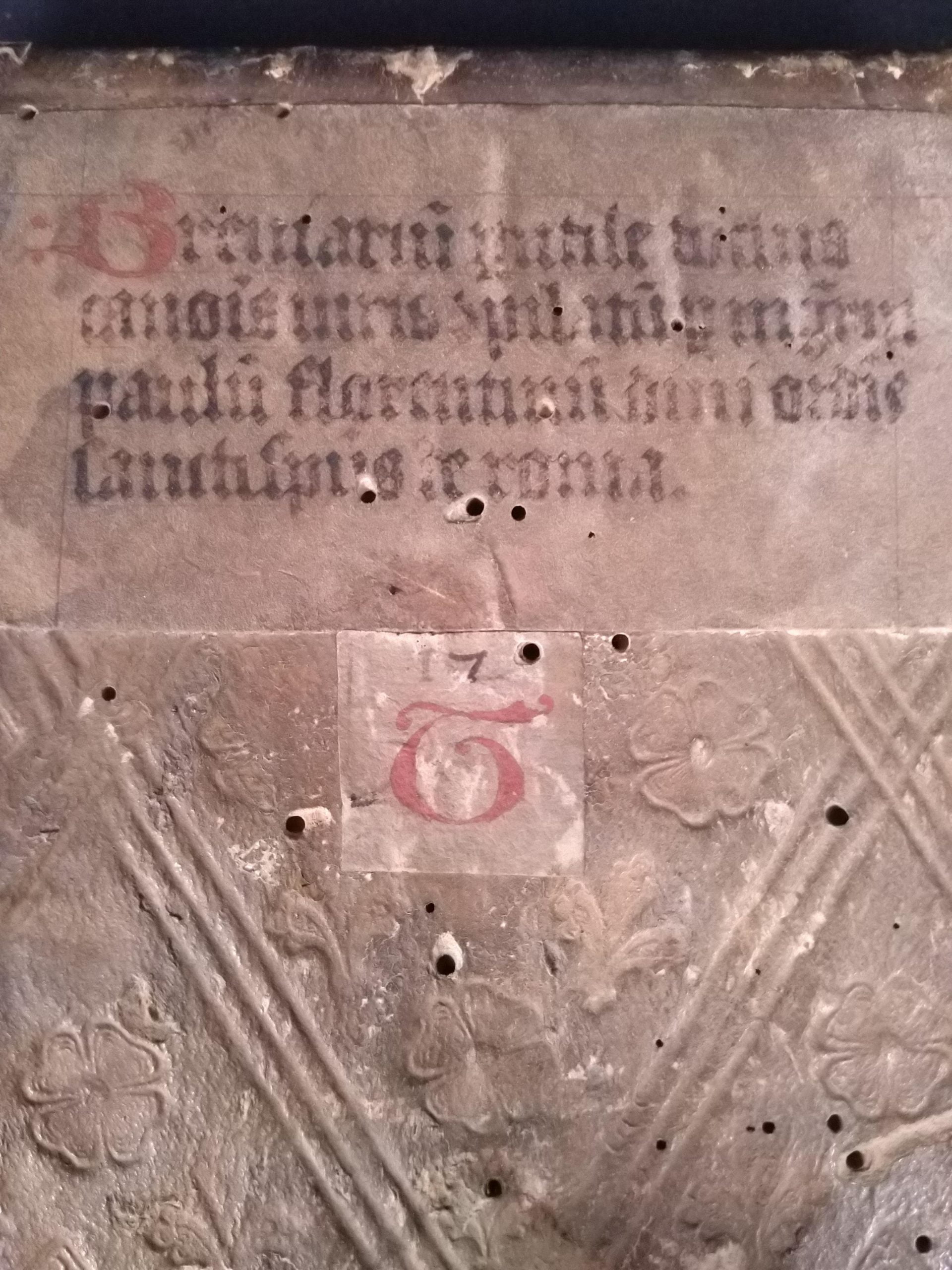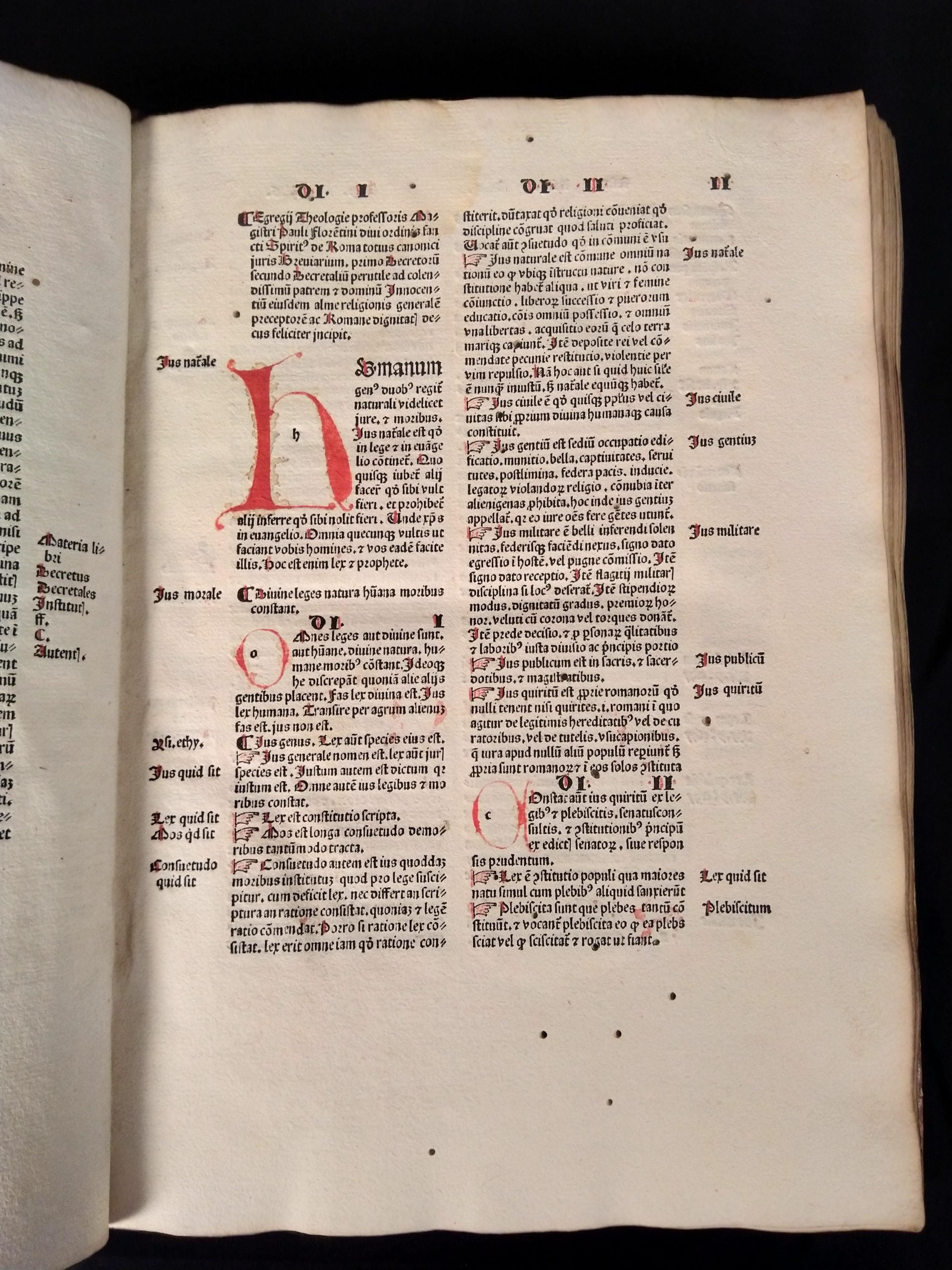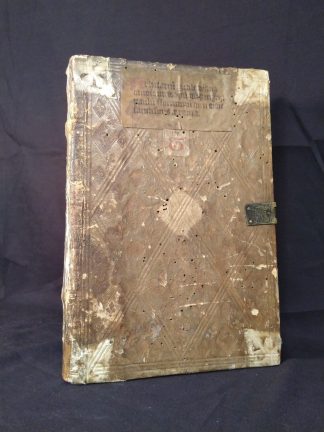ATTAVANTI, Paolus, Florentinus.
C15 BINDING, THE FIRST AUTHOR’S PORTRAIT IN PRINT
Breviarium totius iuris canonici.
Memmingen, Albrecht Kunne, 1486£10,500.00
Folio. ff. (v) 2-129 (*4 a10 b-n8 o10 p8 q5), lacking q6 blank. Gothic letter, double column, ms. initials in red, rubrication throughout, attractive contemporary woodcut portrait of author in his library to recto of first fol. Scattered worm holes, light water stain towards gutter of first few gatherings, minor marginal spotting, red ink marks from initials in a few places, lower outer blank corner of fol. 89 torn, recto of first and verso of last a bit soiled, second leaf strengthened at gutter. A very good, large copy in contemporary south German calf, rebacked with overlaid original spine, lacking centre- and cornerpieces, traces of one clasp and chain holder, blind-stamped to a triple blind ruled cross-hatched design with fleurons and lozenges framing double-headed eagles and four-tailed creatures, raised bands, vellum label with title and casemark heightened in red to upper cover, also (rubbed) to spine, a bit wormed and worn. Early circular armorial paper bookplate (‘Bib: Nor’) of City of Nuremberg Library, with small abrasion, to blank section of portrait leaf.
The woodcut image of Paolo Attavanti in his library on the first fol., bearing the acronym ‘M[agister] P[aulus] F[lorentinus] o[rdinis] S[ancti] S[piritus]’ is the first author portrait ever to appear in a printed book. It first appeared in the 1479 edition of this text, published by Leonardus Pachel and Ulrich Scinzenzeler. ‘The head of the Magister with the expressive neckline in his austere plainness is reminiscent of the simplicity of [the Lombard painters] Foppas and Zenales…the character of Lombard art is clearly visible in the design’ (Kristeller, ‘Die Lombardische Graphik der Renaissance’, 28).
Excellent, well-margined copy of this masterful manual of canon law. Paolo Attavanti (1445-99) was a Florentine preacher, theologian and ‘doctor in utroque iuris’ (canon and civil law). He was a valued member of the humanist circle of Lorenzo de’ Medici, which included the philosopher Marsilio Ficino. A prolific writer of hagiographic and historical works, and a commentary to Dante’s ‘Divine Comedy’. This legal manual for practitioners was designed to make the consultation of canon law ‘easier, speedier and pleasanter’. Canon law was the legal system of the Roman Catholic Church, regulating the rights and duties of individuals, property, crime, trials, etc. The thorough index of the ‘Breviarium’ refers the reader to hundreds of subjects, from purgatory, penance and the images of saints to practical questions like procedures for the election of bishops and the duration of a father’s punishment across generations. Fundamental in canon law was the code of behaviour for religious, including whether they were allowed to bear weapons and their duty to avoid all kinds of theatrical spectacles. Judicial regulations covered all phases of trials and explained, for instance, that no criminal accusations could be accepted from excommunicates, actors, heretics, heathens and Jews. Strict regulations on marriage were crucial as aristocrats and princes often infringed them by marrying a close relative or having illegitimate children. The ‘arbor consanguinitatis’, which occupies an entire page, illustrated the degrees of kinship whereby individuals were too closely related to be granted leave to marry. The annotator of this copy was interested in these issues as he highlighted sections on the illegitimate offspring of priests, bishops and popes.
BMC II, 604; GW M30141; Goff P180; H 7161*; Kristeller, Die Lombardische Graphik der Renaissance, 38 (1479 ed.).In stock


